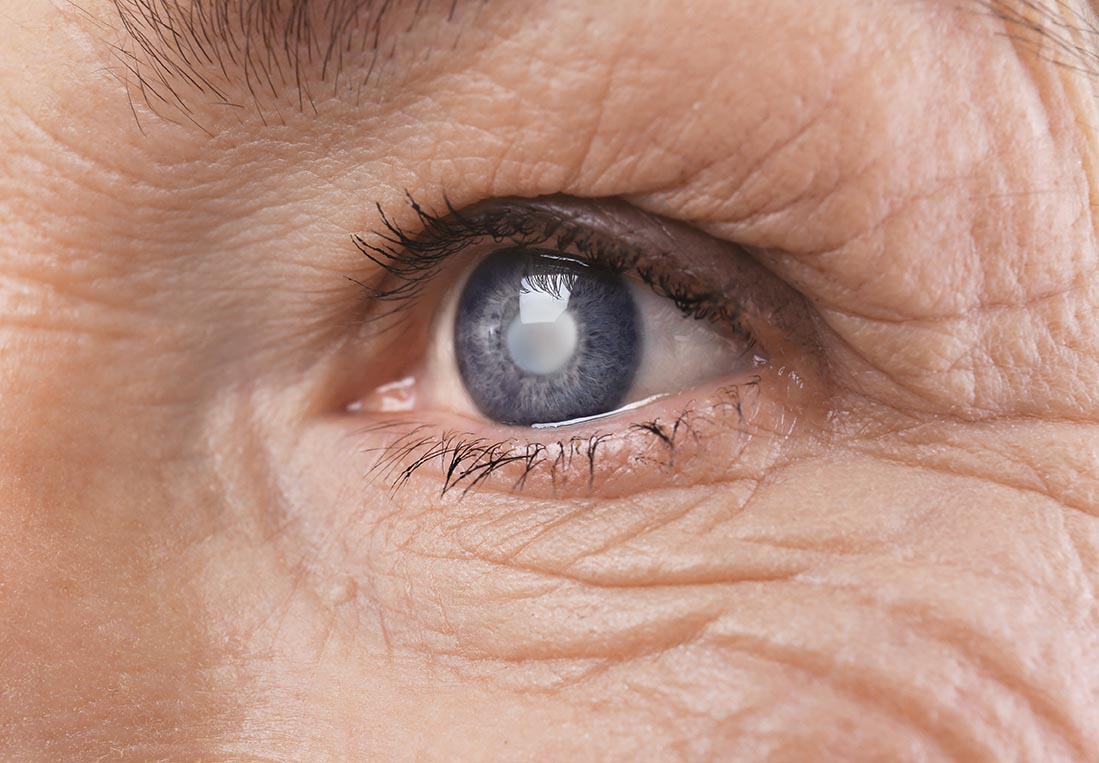
Symptoms of Serious Eye Diseases You Should Know
While vision problems and soreness are obvious signs of an issue, eye diseases and their symptoms come in many forms and range in severity. For an organ that is relatively small compared to the rest of the body, the eyes can be harmed in many ways.
When experiencing any sort of eye trouble, it might be helpful to know what specific symptoms could mean.
Symptoms of Serious Eye Diseases[Hb1]
Here is a list of eye conditions and symptoms you should know about:
Age-Related Macular Degeneration (AMD)
AMD is natural eyesight regression that comes with age. It mainly affects one's ability to see straight ahead and fine details — also known as central or sharp vision. There are two types: wet and dry.
Symptoms:
· Blurriness, waviness and dark spots in your central vision
· Difficulty recognizing faces and seeing fine details
· Early symptom of Wet AMD is when straight lines appear wavy
· Early symptom of Dry AMD is drusen — tiny yellow or white spots under the retina
Best Disease
This genetic disorder causes an egg yolk-like buildup in the macula. It can damage cells and harm a patient's central vision.
Symptoms:
· Problems with central vision; blurriness to total loss
· Different levels of vision loss in each eye
· Metamorphopsia — seeing things shaped oddly
Blepharitis
This condition involves discomfort around the eyes and is not normally associated with vision loss. Usually, once diagnosed, it doesn’t go away.
Symptoms:
· Redness, itchiness and burning sensations
· Crusty flakes around the eyelids and eyelashes
· Could experience wateriness or dryness
· Foamy, bubbly tears
· Sensitivity to light
· Eyelashes that grow in the wrong direction or fall out
· Swelling in other parts of the eye
Cataracts
A cataract is the clouding of an eye's lens that causes central vision impairment. It is the leading cause of vision loss in the United States, but it is very treatable.
Symptoms:
· Blurriness or waviness in your central vision
· Colors seem faded
· Sensitivity to light; glare or halo around lights at night
· Trouble seeing in the dark
· Double vision
· Need bright light to read
· Frequent changes to your glasses or contacts prescription
Central Retinal Vein Occlusion (CRVO)
CRVO is when a blood clot blocks flow to the retina causing sudden vision loss. While the symptoms are similar to other diseases, a key differentiator is that it usually affects only one eye.
Symptoms:
· Blurriness
· Pain or redness
· Sudden vision loss; no gradual symptoms
Diabetic Retinopathy (DR)
Also known as diabetic eye disease, it affects 60% of people who have had diabetes for at least 15 years. It involves damage to blood vessels in the retina — the tissue responsible for light sensitivity.
Symptoms:
· Loss of central vision
· Blurry vision
· Floating spots in your vision
· New color blindness or fading colors
· Poor night vision
· Small dark spots or streaks in your vision
· Drusen
Glaucoma
This is where fluid pressure in both eyes increases to a level that damages the optic nerves. There are two main types: open angle, which progresses slowly over time, and closed angle, which happens fast and is very painful.
· Loss of central and peripheral vision
· Drusen
· Blurred vision
· Eye redness, pain or pressure
· Headaches
· Rainbow-colored halos around lights
· Nausea and vomiting
Optic Neuritis
The swelling of the optic nerve blurs vision and makes eye movement painful. An infection, autoimmune disease or side effect of certain medications can cause it.
Symptoms:
· Pain that worsens with eye movement
· Central or peripheral vision loss
· Vision loss in one eye
· Color blindness
· Flashing lights
· Blurry vision when body temperature increases
Retinitis Pigmentosa
This is a genetic condition where symptoms start in childhood. Many patients eventually lose most of their sight or even go blind; however, it is treatable.
Symptoms:
· Loss of night or peripheral vision
· Sensitivity to bright light
Retinoblastoma
This is a rare eye cancer that mainly occurs in children younger than five. It can cause blindness and is life-threatening.
Symptoms:
· A white color in the center of the eye when light shines on it
· Pain, redness and swelling in the eyes
· Eyes that seem to be looking in different directions; crossed eyes
· Bleeding on the front part of the eye
· A pupil that doesn’t get smaller when exposed to light
· A different color in each iris (colored part of the eye)
· Loss of appetite and weight
· Headache and vomiting
· Lumps under the skin of the neck
· Watery or teary eyes
Resources[Hb2]
This is only a short list of eye diseases and their symptoms. If you would like to learn more about serious eye diseases, check out these sources:
· Use the Mayo Clinic’s Symptom Checkerfor a specific search of eye problems.
· The National Eye Institute has a glossary of common eye diseases with comprehensive descriptions.
· Read the American Academy of Ophthalmology’s article to discover more rare eye diseases.
While there are many different eye diseases and symptoms, they all have the same necessary response: Contact your eye care professional immediately.
If you found this article helpful and informative, visit healthyvisionassociation.com for more content and to learn more about our dedication to promoting healthy vision and overall health.
